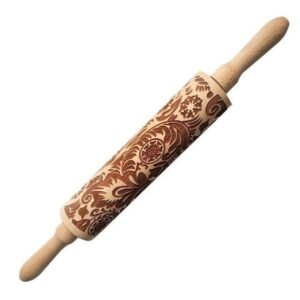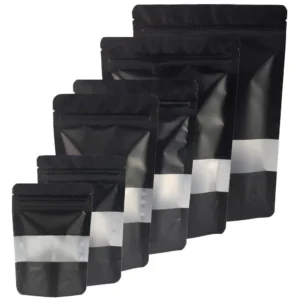Introduction
In the bustling streets of China, a delectable dish was born – chow mein. This beloved culinary creation has captured the hearts and taste buds of food lovers worldwide. With its origins deeply rooted in Chinese cuisine, chow mein has evolved into various mouthwatering variations that cater to different palates. From the classic vegetable chow mein to the savory chicken or shrimp versions, there’s a chow mein for everyone.

Mastering Authentic Chow Mein: A Chinese Chef’s Masterclass
Uncover the secrets behind creating an authentic Chinese chow mein. Learn from a professional chef who specializes in traditional Chinese cuisine. Explore the key ingredients and techniques used in making authentic chow mein. Elevate your cooking skills and impress your friends and family with restaurant-quality chow mein.

Unleashing the Chef’s Expertise
In this masterclass, you’ll have the opportunity to learn from a seasoned chef who has dedicated their career to mastering Cantonese cuisine. With their guidance, you’ll gain valuable insights into recreating the authentic flavors of chow mein right in your own kitchen.
Key Ingredients for Authentic Flavor
Discover the essential components, such as fried noodles, soy sauce, and oyster sauce, that contribute to the distinctive taste of authentic chow mein recipes. From perfectly cooked noodles to a harmonious blend of sauces and seasonings, every ingredient plays a crucial role in achieving that signature flavor profile.
Noodles: Traditional chow mein calls for egg noodles, which provide a delicate texture and absorb flavors beautifully.
Sauce: A combination of oyster sauce, soy sauce, and other seasonings creates a rich umami base for your dish.
Proteins and Vegetables: Customize your chow mein by adding your choice of protein (such as chicken, beef, or shrimp) and an array of fresh vegetables like bok choy, carrots, and mushrooms.
Techniques for Restaurant-Quality Results
Mastering the art of pan cooking is key to achieving that amazing wok hei (breath of wok) flavor synonymous with great Chinese cuisine. The chef will guide you through proper wok handling techniques, ensuring even heat distribution and quick cooking times.
High Heat: Cooking over high heat allows for rapid searing and caramelization while maintaining crispness in vegetables.
Stir-Frying: Constantly tossing ingredients in the hot pan ensures even cooking without overcooking or burning.
Timing: Knowing when to add each component and the order of cooking is crucial for perfectly cooked noodles, tender proteins, and crisp vegetables.
Budget-Friendly Chicken Chow Mein: The Cheapest Noodle Dish Ever
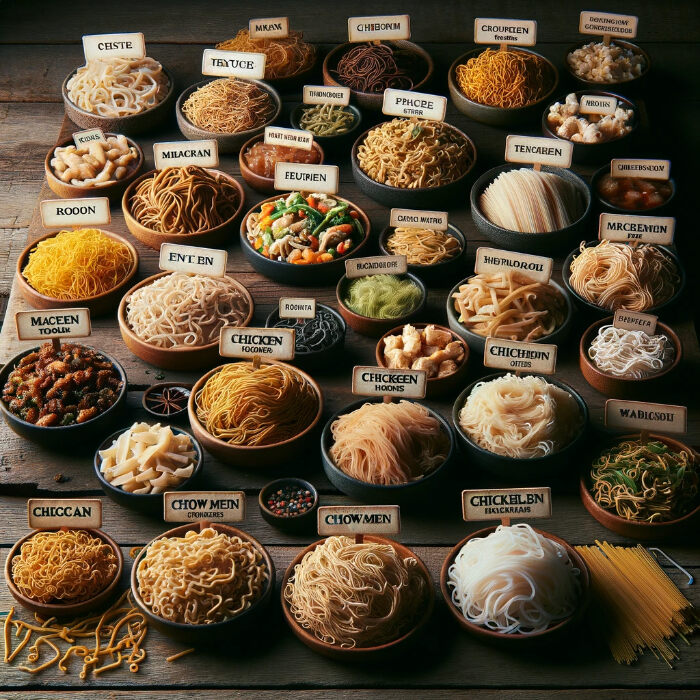
If you’re looking for a delicious noodle dish that won’t break the bank, then look no further than this budget-friendly chicken chow mein recipe. With a few simple ingredients and some clever substitutions, you can enjoy a tasty homemade meal without spending a fortune.
Learn how to make an affordable chicken chow mein that won’t break the bank.
Making your own chicken chow mein at home is not only cost-effective but also allows you to control the quality of ingredients. By using pantry staples and inexpensive substitutes, you can create a flavorful dish without compromising on taste.
Discover budget-friendly ingredients that still deliver great flavor.
Instead of using expensive fresh noodles, opt for thin spaghetti as a more affordable alternative. It cooks up quickly and has a similar texture to traditional chow mein noodles. To enhance the flavor of the dish without adding extra cost, use low-sodium soy sauce instead of regular soy sauce or add some homemade chicken broth for richness.
Save money while enjoying a delicious homemade noodle dish.
One of the best parts about cooking at home is being able to save money while still enjoying delicious meals. By making your own chicken chow mein, you can avoid pricey takeout options and have full control over portion sizes and ingredients.
Experience the satisfaction of creating an inexpensive yet tasty meal.
There’s something incredibly satisfying about preparing a meal from scratch and knowing that it didn’t break the bank. With this budget-friendly chicken chow mein recipe, you’ll experience just that – the joy of creating something tasty without spending a fortune.
Selecting the Best Noodles for Chicken Chow Mein
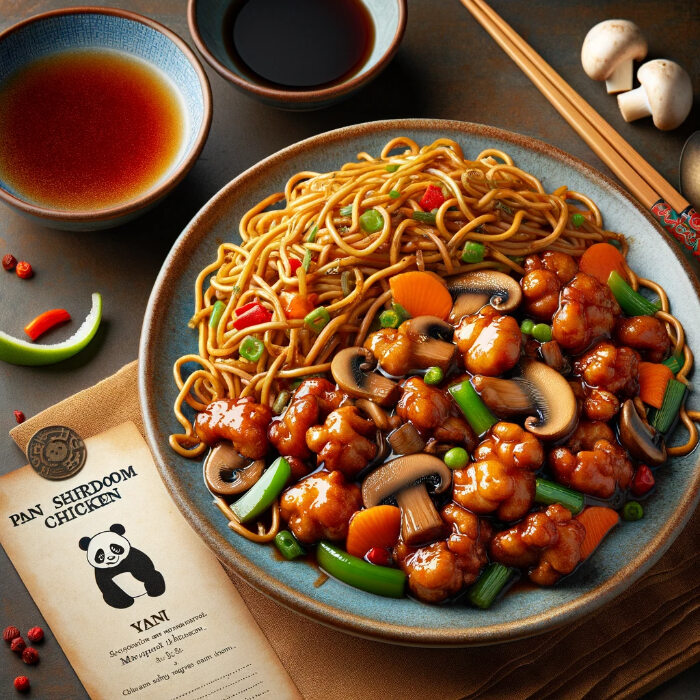
Selecting the right type of noodles is key. The noodles you choose can greatly impact the overall taste and texture of your dish. Let’s explore some options and find the best noodles that will take your chicken chow mein to the next level.
Egg Noodles: Classic and Versatile
Egg noodles are a popular choice for chicken chow mein due to their versatility and ability to hold up well in stir-frying. These thin, yellow noodles have a slightly chewy texture that pairs perfectly with tender chicken strips and crisp vegetables. Noodles are good at absorbing flavors easily, making them an excellent choice for soaking up all those savory sauces in an oyster recipe.
Rice Noodles: Light and Gluten-Free
If you’re looking for a gluten-free option or prefer a lighter texture, rice noodles are an excellent choice. These translucent strands cook quickly and have a delicate, silky texture. They add a touch of sweetness to your dish while allowing the flavors of the chicken, celery, and other ingredients to shine through.
Udon Noodles: Thick and Chewy
For those who enjoy heartier noodles with more bite, udon noodles are worth considering. These thick wheat-based noodles have a chewy texture that adds substance to your chow mein. They soak up sauces well and provide a satisfying mouthfeel when combined with tender chicken pieces.
Ramen Noodles: Quick and Easy
If you’re short on time or craving that instant noodle goodness, using ramen noodles can be a convenient option. Simply discard the seasoning packet that comes with packaged ramen and cook the plain noodles separately before adding them to your chow mein dish. This shortcut saves time while still delivering tasty results.
Perfecting Your Homemade Chow Mein
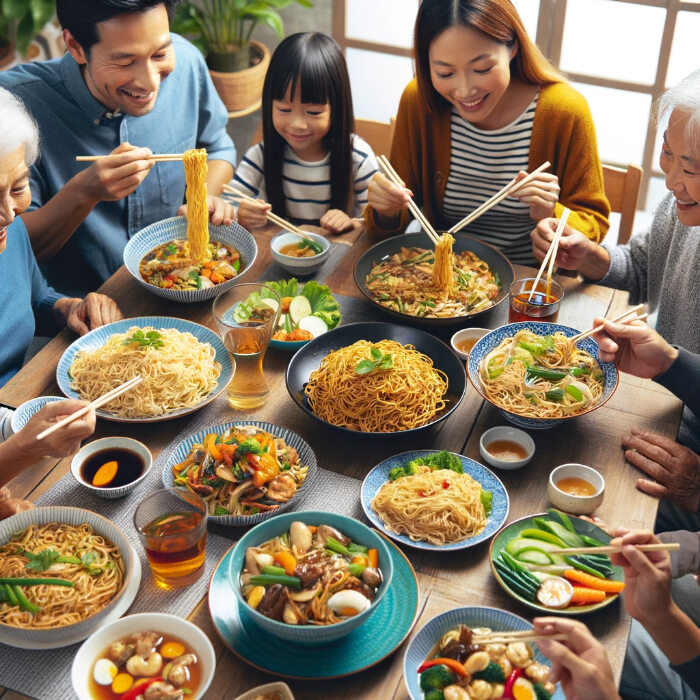
Making restaurant-quality chow mein at home may seem like a daunting task, but with the right tips and tricks, you can elevate your cooking game and create a delicious dish that will impress your taste buds.
Essential Tips for Flavors and Textures
To ensure your chow mein is bursting with flavor, it’s crucial to use a combination of sauces that complement each other. A delicious sauce blend typically includes hoisin sauce, soy sauce (both regular and dark), oyster sauce, and toasted sesame oil. These ingredients work together to create a savory umami flavor that will make your taste buds dance.
Stir-frying is key. The high heat allows for quick cooking while maintaining the crispness of the vegetables and noodles. Remember to cut all your ingredients into bite-sized pieces to ensure even cooking throughout.
Mastering Stir-Frying Noodles
The cooking process for chow mein involves stir-frying noodles until they are perfectly cooked with a slight chewiness. Start by boiling the noodles according to package instructions until they are al dente. Then rinse them under cold water to stop the cooking process.
In a hot wok or skillet, add some oil and toss in your cooked noodles along with the rest of your ingredients such as shredded cabbage, fresh bean sprouts, green onions, or any other vegetables you desire. Stir-fry everything together until heated through and well combined.
Elevating Your Chow Mein Game
To take your chow mein from good to great, try incorporating some additional techniques into your cooking process. For example:
• Add some crispy texture by pan-frying the noodles after stir-frying.
• Experiment with different protein options such as chicken, shrimp, or tofu.
• Garnish with fresh herbs like cilantro or Thai basil for an extra burst of flavor.
Panda Express Mushroom Chicken and Other Recipes, with Chow Mein Instructions
If you’re a fan of Panda Express and want to recreate their delicious dishes at home, you’re in luck! One of their most popular menu items is the mushroom chicken. In addition to that, we’ll also provide step-by-step instructions for making Panda Express-style chow mein right in your own kitchen.
Delicious Recipes from Panda Express
Panda Express offers a wide variety of mouth-watering recipes that are loved by many. One standout dish is their mushroom chicken. It’s a savory combination of tender chicken, fresh mushrooms, and a flavorful sauce that will leave your taste buds wanting more.
Recreating Popular Dishes at Home
With the right ingredients and techniques, you can easily recreate these beloved dishes in your own kitchen. By following our simple instructions and using high-quality ingredients, you’ll be able to achieve the same great taste as Panda Express.
Making Panda Express-Style Chow Mein
Chow mein is another favorite dish on the Panda Express menu. It’s a stir-fried noodle dish packed with vegetables and savory flavors. With our step-by-step instructions, you can make this delicious chow mein at home without having to order takeout.
To make Panda Express-style chow mein:
1. Gather all the necessary ingredients such as noodles, vegetables (like cabbage and carrots), soy sauce, oyster sauce, garlic powder, and sesame oil.
2. Cook the noodles according to package instructions.
3. In a separate pan or wok, sauté the vegetables until they are tender-crisp.
4. Add the cooked noodles to the pan along with the sauces and seasonings.
5. Stir-fry everything together until well combined and heated through.
6. Serve hot and enjoy!
Conclusion
Mastering the chow mein recipe is not just about following instructions; it’s about unleashing your creativity in the kitchen. Like an artist with a blank canvas, you have the power to experiment with flavors and ingredients, making each dish uniquely yours. So go ahead, let your culinary imagination run wild!
FAQs
Can I substitute chicken with other proteins in my chow mein?
Absolutely! Chow mein is incredibly versatile. Feel free to substitute chicken with beef, shrimp, tofu, or even a medley of vegetables for a vegetarian option.
Are there any gluten-free alternatives for noodles in chow mein?
Yes! If you’re looking for gluten-free options, consider using rice noodles or gluten-free pasta instead of traditional wheat-based noodles. They work wonderfully in chow mein recipes without compromising on taste or texture.
How can I add more vegetables to my chow mein?
Adding more vegetables not only enhances the nutritional value but also adds vibrant colors and flavors to your dish. Try incorporating bell peppers, carrots, broccoli, snow peas, or bean sprouts for a delightful crunch and a burst of freshness.
Can I make chow mein ahead of time?
While chow mein is best enjoyed fresh, you can certainly prepare some components in advance to save time. Cook the noodles and chop the vegetables ahead of time, then assemble and stir-fry everything together just before serving for optimal taste and texture.
Is it possible to make chow mein spicy?
Absolutely! If you enjoy a bit of heat in your dishes, feel free to add chili flakes, sriracha sauce, or diced chili peppers while stir-frying your ingredients. Adjust the amount according to your spice tolerance for a fiery kick that will tantalize your taste buds.
Frequently Linked Pages
1. Chow Mein Noodles – Chow Mein Noodles: Delicious Recipe for the Best Chicken Chow Mein!
2. Chow Mein vs Lo Mein – Chow Mein vs Lo Mein: Decoding the Differences in Chinese Noodle Delights
3. Chow Mein – Chow Mein: A Flavorful Exploration of the Classic Chinese Stir-Fried Noodles




